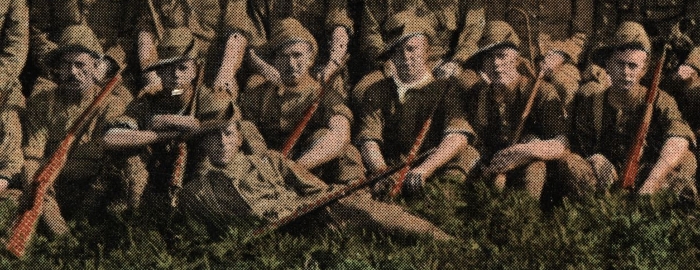Topic: Canadian Army

Annual Training of the Permanent Force (1912)
From the archived correspondence of the Governor General at Library and Archives Canada
The annual training of the Permanent Force took place at Petawawa camp from August the 17th to September the 14th. In all, a force of 1,250 was assembled under the command of Major-General Colin Mackenzie, Chief of the General Staff. The units present were:—
- Royal Canadian Dragoons – 2 Squadrons
- Lord Strathcona's Horse – 2 Squadrons
- Royal Canadian Horse Artillery – 2 Batteries
- Royal Canadian Engineers – No. 2 Field Company
- Royal Canadian Regiment – 8 Companies
Regimental training was carried out for the first two weeks under Commanding Officers, the remainder of the period being devoted to combined training including field firing and night operations. At the conclusion of the training, September 10th, 11th & 12th, continuous manoeuvres took place in the country-side lying southeast of the Military Reserve, in the vicinity of Pembroke.
On the first day of these operations which were directed against a flagged enemy, all arms worked in combination, and after a stiff fight in the neighbourhood of Stafford the Infantry bivouacked near the ground they had won, whilst the Cavalry pressed on in pursuit of the beaten enemy, chased him across the Indian River and finally went into bivouac at Locksley Station, eighteen miles South of Petawawa, whilst the Horse Artillery which had supported the pursuit, rejoined the Infantry at Stafford. A severe electric storm and torrential rain, which lasted all night, rendered the bivouac an uncomfortable one for the troops.
On the second day, and in continuation of the same scheme of operations, the Cavalry carried out an extended reconnaissance from Locksley to the line of the Bonnechere River, during then course of which some of the patrols covered nearly fifty miles.
Information concerning the enemy, such as would have been obtainable from a friendly population in actual warfare, had been previously mailed by the directing staff to post-offices throughout the Area, and patrols were instructed to collect this information and transit it to the Commanders of their supporting squadrons by the quickest available method, viz. Either by telephone, visual signalling or despatch riders. On receipt of the various messages, Squadron Commanders were requited to make dispositions to meet the various situations as stated in the messages and had to communicate their intentions or orders to other bodies of troops acting on their flanks. The last message received was from one of the most distant points and contained instructions for the Cavalry to return to their bivouac of the previous night at Locksley Station. On arrival here at about 9 p.m. the Cavalry found the Artillery and Infantry snugly bivouacked beside blazing camp fires and engaged in drying out the blankets which had been soaked by the previous night's downpour. In the course of their march from Stafford, the Artillery and Infantry has encountered considerable opposition at the Indian River, from a detached force of the enemy which had been marching to effect a junction with their forces already broken up by our Cavalry on the previous day.
The operations provided useful information in the choice of positions from which to cover the passage of a river in the face of the enemy, and emphasized the importance of seizing tactical points, mutual co-operation and covering fire.
On the last day the troops, all arms being again reunited, were exercised in a fresh scheme which brought the manoeuvres to a close, about 12. noon and the units then marched back to camp independently, the total distance covered by the Infantry, in marching order, on this day being 18 miles.
On the following day, September 13th, there was a meeting of all the officers who had taken part in the manoeuvres, upon which occasion Major-General Mackenzie, having then had time to consider the reports of the umpires, gave a narrative of the events as they occurred during the operations, and called attention to the lessons which were to be learnt and the points to which special attention should be directed upon future occasions.
In connection with the training of the Permanent Force, mention must be made of the work of the Corps of Guides detachment belonging to the 3rd & 4th Divisions, which underwent their annual training during the last 16 days of the camp. The first part of their training consisted of a hurried reconnaissance of the area, some 360 square miles, in which the operations referred to above, took place. A skeleton map was corrected and supplements so far as time would permit and the Guides were subsequently attached to the various units of the Permanent Force, in the final manoeuvres, as intelligence officers and as such gave a good account of themselves.
Two special features, aside from the practical nature of the training, characterized the combines manoeuvres, one was the cheery spirit of the men, who enjoyed the training and showed great willing ness; the other was the excellent relations between the troops and the farmers over whose ground they worked. On being sounded in advance as to whether they would object to having troops work over their firlds after the harvest was got in, the inhabitants unanimously agreed. They turned out in considerable numbers to see th operations, and they showed good will in every particular, and asked them to come again next year. The troops on their side behaved well, and no claim for compensation was made. The General Staff take the view that the operations go far to prove that manoeuvres cam be held over any part of the country without annoyance to or objection from the landowners when once the crops are off the ground.

